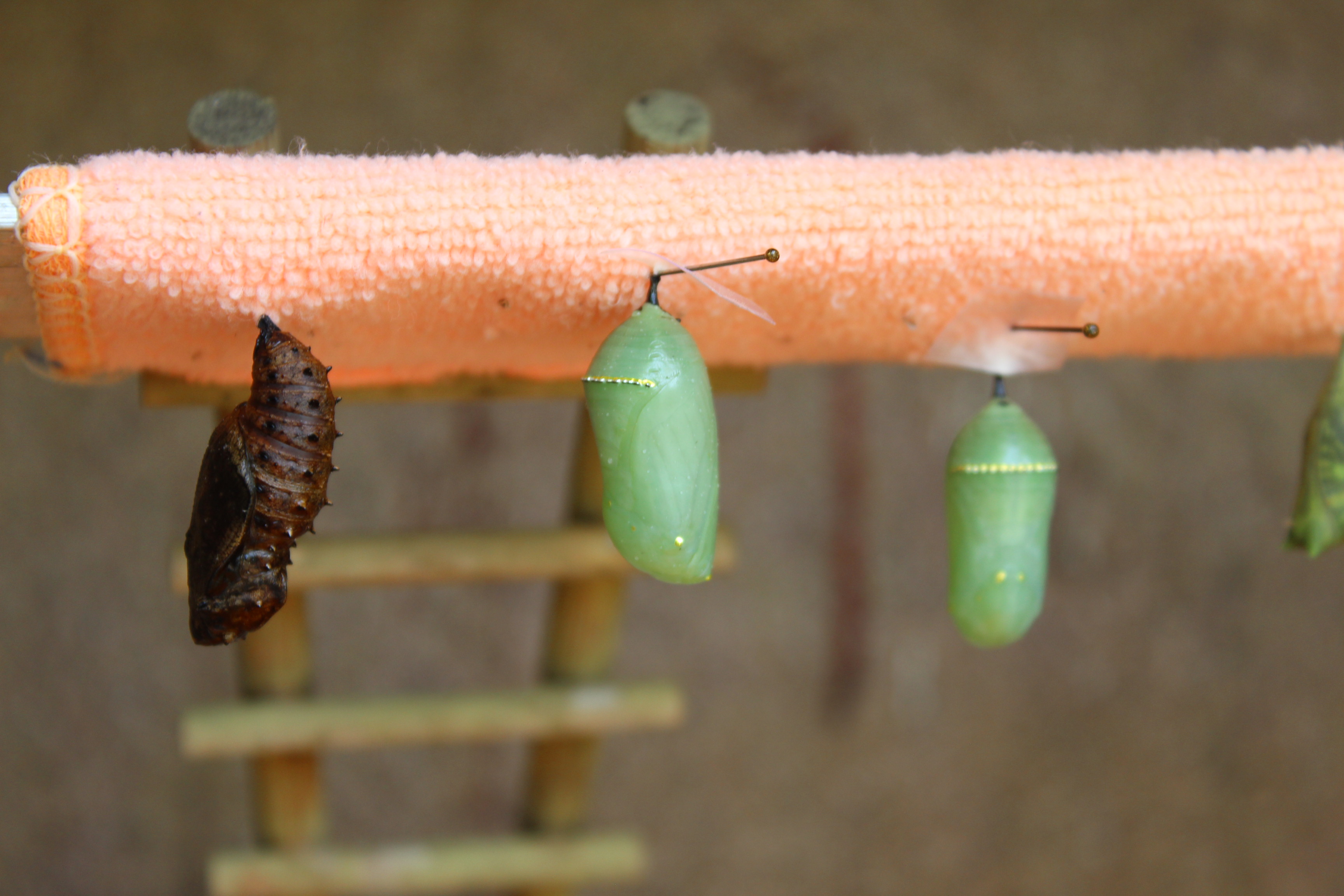Who wants to see caterpillars and butterflies?
A lot of people — 35,000 annually on average and maybe 40,000 this year with a lull in the pandemic — at the Roston Native Butterfly House at Nathanael Greene/Close Memorial Park.
People like Wisconsin native Jada Brandt, who took a hike at the park discovered a beautiful surprise — dozens of butterflies up close at the butterfly house.
“I wandered here one day when I accidentally put it in my phone,” she recalled. “It was a magical adventure!”
During a return visit Wednesday, Brandt and hordes of curious youngsters were surrounded by dozens of ornately colored butterflies — zebra swallowtails, great spangled fritillaries, polyphemus and cecropia moths (Missouri's largest moth) and emerald-green chrysalises that will soon yield orange-and-black monarch butterflies.
Fourteen species flutter freely inside, with more varieties soon to arrive as their breeding cycles take place through summer.
The net-cloaked butterfly house, now in its 14th year, is the only walk-through exhibit in the state that focuses almost entirely on Missouri native butterflies and the native plants they feed on. Best of all, it's free.
Where do the butterflies come from?

Chris Barnhart, professor emeritus of biology at MSU and a butterfly expert, raised most of the delicate creatures flying about in the butterfly house. Other butterfly fans in the community also provide some of the living gems.
Barnhart said the butterfly house teaches about the life cycles of butterflies, how they lay eggs and what they eat as caterpillars before they transform. Zebra swallowtails, he notes, rely on Missouri pawpaw trees to reproduce.
A pawpaw grows inside the butterfly house, with tiny zebra swallowtail caterpillars creeping along the leaves.
On muggy days, the butterflies might seem to be unusually friendly, alighting on visitors' fingers or necks where they can be seen up close. It's no accident, Barnhart said.
“Butterflies need sodium so they get it from people's sweat,” he said. “Some of the little kids in here are like magnets for butterflies. I tell them it's because they're sweet, but it's really because they're salty.”
Attraction is popular with visitors

More than 35,000 people a year typically visit the butterfly house, and a guest book shows visitors from Ireland, Korea, New Delhi, the U.K. and other international places. Barnhart said he thinks the butterfly house might draw 40,000 people this year.
Joplin resident Abigail Vance brought her Idlewild Nature School group to the butterfly house for the first time on Wednesday.
“It's very cool because we can see things we've only seen glimpses of in nature,” she said. Here you can see them and study them instead of only having a quick glimpse.”
Terry Bollinger of Goodman came to the butterfly house with her home-school group. She and daughter Mabel, 3, expressed surprise and delight when a great spangled fritillary butterfly decided to land on mom's finger.
“It's incredible here,” Bollinger said, eyeing the quite tame rust-colored butterfly. “It's such a great resource for our kiddos to learn about nature.”
The fact that there's no admission fee appealed to Megan Powers, of Carthage, who arrived with her 7 children ages 1-9 in tow.
“I love it,” she said. “We home school and this month we're learning about pollinators. Last week we learned about mason bees, but this week it's about butterflies.”
A destination for the curious

Butterfly house intern Anna Maria Snodderly keeps tabs on the visitors, encouraging the little ones not to step on or chase the butterflies — they'll come to you — and answering questions that arise. She said the netting on the butterfly house keeps most butterfly predators out.
“But sometimes birds find a way in and they have a feast,” she said.
She fields a lot of questions from kids and adults alike. She recalled a father and son who spent a lot of time inside the butterfly house, then walked all the way to the parking lot, only to turn around and come back.
“Nothing surprises me,” she said. “They came in and asked how do butterflies poop? They just had to come back and ask that question.”
For the record, yes butterflies poop out the back end of their body.
A lesson in life cycles

The butterfly house is a microcosm of real life, and just as in the wild there are occasional life-and-death struggles that take place in full view of visitors. Butterfly master Barnhart spotted just such an event happening to a zebra swallowtail that had stopped moving.
“Uh oh,” Barnhart said, as he scooped up the immobilized butterfly. “There's a bold jumping spider attached to it. The spider envenomates it immediately before it eats it. This butterfly's a goner.”
He showed the butterfly — spider still attached — to a group of youngsters who learned a truthful lesson about life in the wild, even in a butterfly house.
The idea for an educational venue about native Missouri butterflies was conceived by Dr. Bill Roston, a Forsyth physician who wanted to share his passion for the outdoors with a place that would be free to anyone.
“He used to call them flying flowers,” said Lisa Bakerink, who knew Roston before he died in 2019. “He learned everything about them and their life cycle and the native plants they needed to survive.”
In 2008 Roston proposed the butterfly house — focusing on native species. It was built in 2009 and is managed by the Friends of the Garden and the Springfield-Greene County Park Board.
About Roston Native Butterfly House
2400 South Scenic Avenue, just south of the Springfield-Greene County Botanical Center building.
Admission: Free, donations welcomed
Hours: 10 a.m.-7 p.m. seven days a week
Opens mid-May, closes mid-October


